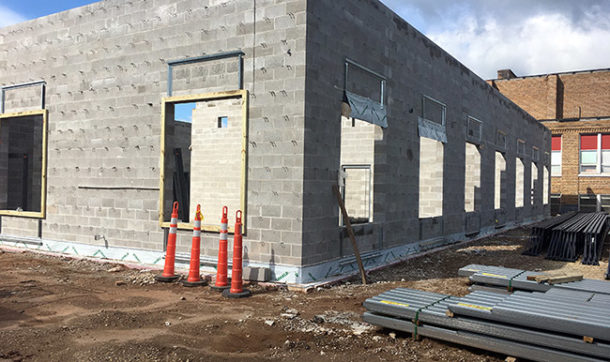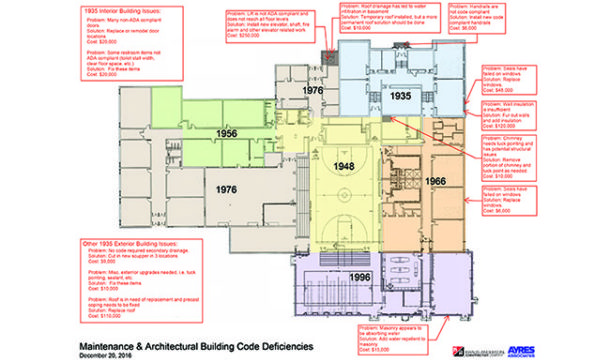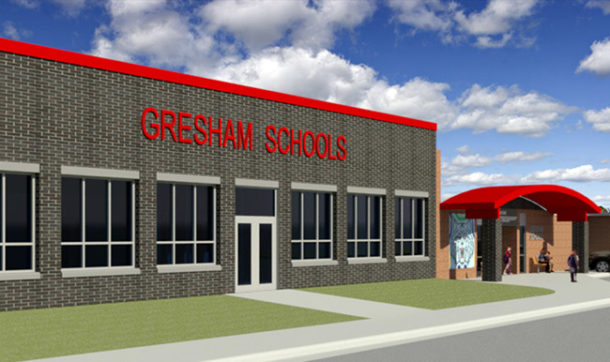Clients Can Find Success with Fast-Track Project Schedule
 The term “fast-tracked” is often overused in our industry. Fast-tracked defines a design process that begins before all the information is known, in hopes redesign is not required once that information is acquired. Architects, planners, and engineers often need months and sometimes years to guide a project through the schematic design and planning phase, only to find that the project now must be fast-tracked through the final design stages.
The term “fast-tracked” is often overused in our industry. Fast-tracked defines a design process that begins before all the information is known, in hopes redesign is not required once that information is acquired. Architects, planners, and engineers often need months and sometimes years to guide a project through the schematic design and planning phase, only to find that the project now must be fast-tracked through the final design stages.
Successful Fast-track Projects Keep End in Mind
Having a project be fast-tracked isn’t uncommon in the architectural-engineering (AE) industry, with an estimated 10% to 25% of projects encountering this type of challenge. At times, clients may embark on a project with the end in mind but may overlook the process to get there. Once they start opening their checkbooks, they may decide they want to move the project along more expediently. Essentially, a consultant can go from waiting and waiting to a “want-it-done-tomorrow” mentality. A public process can drag on and eat away at a project schedule, whether it be city council, waterways, or public information meetings, among many other examples. Sometimes the project clock keeps ticking while clients await necessary approvals on their projects.
Several factors can make or break the success of fast-track projects. Largely, an accelerated project schedule will work only if all parties are in close communication: the client, design consultant, and contractor. More frequent meetings are necessary, sometimes even daily but certainly more than once a week. Fast-track projects work best with design-build project delivery, where the client, design consultant, and contractor work on the project collaboratively, rather than with design-bid-build contracts where the contractor works independently after the design is completed.
 School projects are prime candidates for the fast track. Schools have hard start and stop dates, meaning the pressure is on to complete projects before students walk back through the doors in the fall. Often there’s a three-month time crunch when it comes to these projects.
School projects are prime candidates for the fast track. Schools have hard start and stop dates, meaning the pressure is on to complete projects before students walk back through the doors in the fall. Often there’s a three-month time crunch when it comes to these projects.
Case Study: School Project Meets Deadlines
In one example, the Gresham School District in Gresham, Wisconsin, was undergoing an addition and renovation, which was the result of a successful $6.5 million referendum. While the timing of the referendum left our team with five months to provide plans and specifications to the construction management team, securing a contract with the client still required school board officials to agree on construction and design decisions. It took time to reach consensus, and as a result, the subsequent back-and-forth meant the original five months was reduced to just over two months.
 A project this scale that would normally need six to eight months to finalize bid documents was reduced to 10 weeks. Having this project succeed on such a tight schedule wasn’t easy, but with additional coordination efforts by all team members and extreme flexibility by the clients and construction management team, this fast-track schedule worked.
A project this scale that would normally need six to eight months to finalize bid documents was reduced to 10 weeks. Having this project succeed on such a tight schedule wasn’t easy, but with additional coordination efforts by all team members and extreme flexibility by the clients and construction management team, this fast-track schedule worked.
Fast-track Schedule Requires Good Communication
However, the fast-track approach can be less than ideal. Consultants need time to vet out good design decisions. Quality can suffer with a rushed delivery, and errors and omissions are more likely. Rushed decisions may create rework, the potential for overtime costs is increased, previous decisions become inflexible, and overall all parties end up doing more work within a shorter time frame.
Despite these potential problems, with constant communication and a clear understanding of what’s feasible and what isn’t, clients can achieve success with a fast-track project delivery method.
For more information on fast-track project schedules reach out to any of our experts, or check out “Best Practices for Design in Fast-Track Projects” from Construction Industry Institute.

Post a comment: